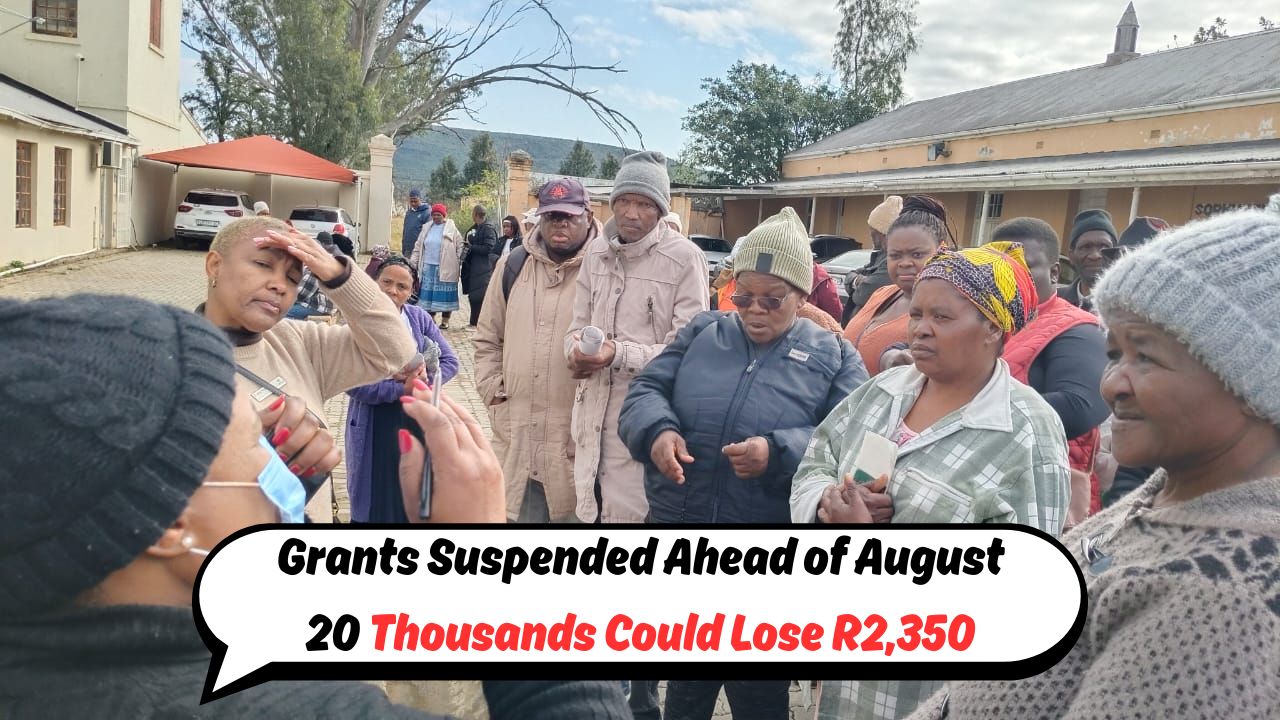12000 Grants Suspended – 12,000 grants have reportedly been suspended before 20 August, placing R2,350 payments in serious jeopardy for thousands of vulnerable beneficiaries. If you or a family member depends on this income, treat this as an urgent compliance alert—not a panic alarm. Most suspensions stem from issues that can be fixed quickly: missed ID re-verification, outdated bank details, unreported income changes, duplicate profiles, or flags triggered during routine fraud and eligibility audits. In many cases, payments are paused while records are checked, not permanently cancelled. Your priority is to confirm your status, identify the exact reason, and submit the right documents promptly. Log into the official portal, use the agency’s mobile channels, or visit your nearest office to review your application notes. Ensure your ID, phone number and banking details are correctly matched and in your name. Keep proof of address handy and recent. Acting now—before the next payment run—can prevent a prolonged delay and help you get reinstated faster.
Why were 12,000 grants suspended?
Large batch suspensions usually follow an audit window where applications are scanned for mismatches and eligibility gaps. Common triggers include ID or biometric verification not completed on time, bank accounts not reflecting the beneficiary’s legal name, bounced payments due to dormant or closed accounts, and income or assets that appear to exceed the threshold set for the grant type. Other frequent flags are duplicate or overlapping benefits in the same household, missing proof-of-life confirmations, and documents that have expired—such as an ID, disability assessment, or foster care court order. Sometimes, automated data matches with banks, Home Affairs, or education records raise questions that must be cleared before funds are released. Remember: a “suspended” status is not a final rejection. It is a hold. If you resolve the exact reason—by updating details, re-submitting documents, or completing biometrics—your grant can move back to “approved” and resume on the next valid cycle.
Who is most at risk—and what to do right now
You are at higher risk if you recently changed banks or phone numbers; if your ID is lost, expired, or not fully verified; if your appeal or re-application is pending; or if your income temporarily spiked (for example, seasonal earnings or once-off deposits). Students who receive other state support, guardians managing multiple grants, and beneficiaries using shared bank accounts also get flagged more often. Your immediate actions: log in and check your status; read the suspension reason code carefully; update your personal and banking details so they match your ID exactly; re-consent to data checks if prompted; and complete any biometric or office visit that’s required. Prepare clear scans or photos of all documents before uploading. Keep your phone on and accessible for OTPs and verification calls. If the online route fails, go to the nearest office with originals. Move quickly—resolving the root issue early protects the next payout.
How to check your status today (step-by-step in plain language)
Start by signing in to the official online portal or approved mobile channels and navigate to “Application Status” or “Payment Status.” If you see “suspended,” open the detailed note or code that explains why. Next, use the “Update Details,” “Upload Documents,” or “Re-verify ID/Biometrics” options to fix the precise issue. If banking is the problem, confirm the account is active, in your full legal name, and matches your ID number. If identity is the concern, re-verify with a clear selfie/biometric and front-and-back ID images in good lighting. Screenshot every submission confirmation and note the reference number. Can’t access online services? Visit the nearest office with your documents and ask staff to print your status page and reason code. Keep a dated record of everything you submit. Re-check your status every couple of days until it shows “approved” or “payment processed,” and only then expect funds on the next valid run.
Documents you’ll likely need—and smart tips to speed reinstatement
Bring your original South African ID or Smart ID, a recent proof of address (not older than three months), an official bank confirmation letter or stamped bank statement in your name, and your active SIM registered (RICA) in your name for OTPs. If applicable, carry a disability medical assessment, caregiver/foster care court order, or guardianship documents. Ensure photos or scans are crisp, corners visible, and file sizes within portal limits. Names must match exactly across ID, bank, and profile—no initials where a full name is required. Avoid using someone else’s bank account. If income temporarily pushed you over the limit, add a short explanation with supporting paperwork (e.g., once-off deposit proof). Never share passwords or pay “agents” to fast-track your case—use only official channels. Processing times vary, so keep checking your status, answer calls promptly, and retain all receipts and reference numbers until your payment reflects again.
